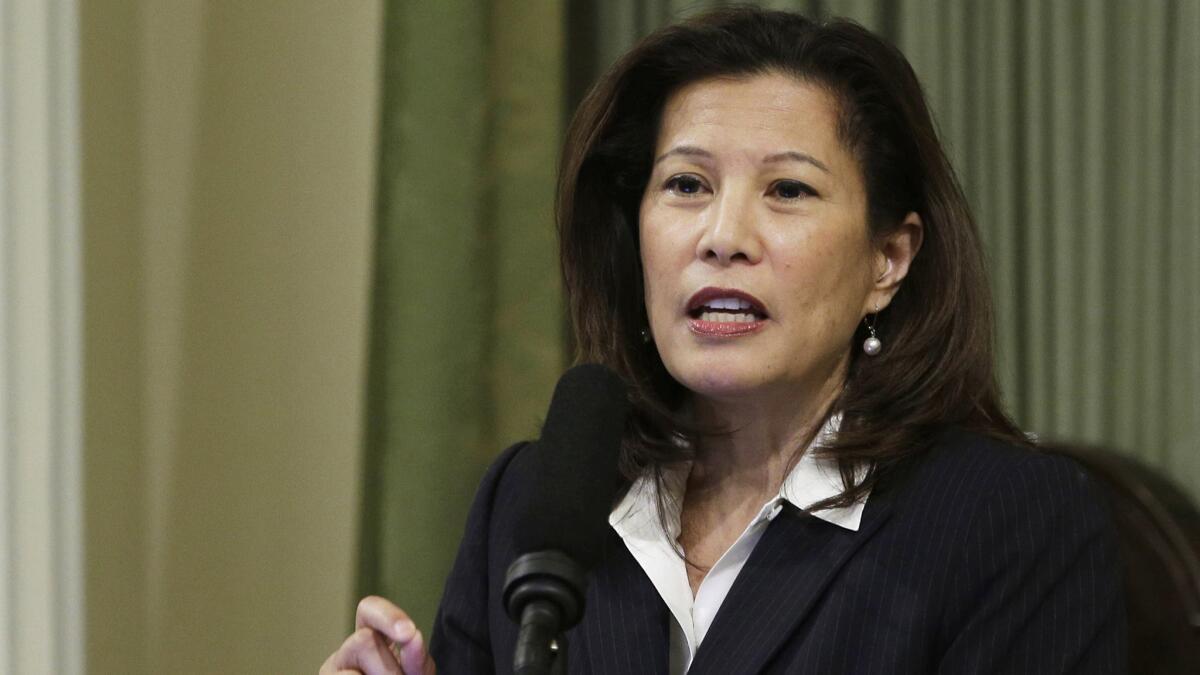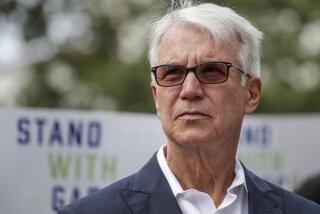‘Kill zone’ prosecutions are sharply limited by California Supreme Court

- Share via
A gang member in San Bernardino County shot at a rival he blamed for killing his cousin.
Both the shooter and his accomplice were convicted of the attempted murder of the target and an unharmed man who was attending a block party where the shooting occurred.
The 2008 convictions caused the California Supreme Court on Monday to sharply limit such “kill zone” prosecutions.
Since 2002, the state has convicted defendants of the attempted murder of people who were not a defendant’s primary target but were near or at the crime scene — regardless of whether that person was injured.
One of the defense lawyers in Monday’s case estimated that hundreds of defendants in California have been convicted under the kill zone theory. The other defense lawyer said such convictions have been “not infrequent.”
In a unanimous decision, the state’s highest court overturned the attempted murder convictions involving the person who was not targeted and cautioned trial judges to allow the theory sparingly in the future.
“The kill zone theory permits the jury to infer that the defendant harbored the requisite specific intent to kill the primary target and everyone within the zone of fatal harm,” Chief Justice Tani Cantil-Sakauye wrote for the court.
In the San Bernardino case, the evidence did not support the convictions, the court found.
In the future, the chief justice wrote, the theory should be used only when there is evidence that a defendant had a specific intent to kill not only the target but also “everyone within the zone of fatal harm.”
Deciding whether a defendant can face such a prosecution will depend on the circumstances of the attack, including the type and extent of force used, and the location of the person who was not the primary target, the court said.
“Trial courts courts must be extremely careful in determining when to permit the jury to rely upon the kill zone theory,” the court cautioned.
The direction to scale back use of the theory came in an appeal brought by Michael Canizales and KeAndre Windfield, who were jointly charged and tried before a single jury on counts including first-degree murder and two attempted murders.
The trial court gave a kill zone instruction to the jury on the attempted murder charge of Travion Bolden, a rival gang member who was with the target and who, like the target, was unharmed.
The jury convicted both defendants of Bolden’s attempted murder, adding 15 years to life to the defendants’ sentences. Monday’s ruling overturned only those convictions.
“Even when a jury is otherwise properly instructed on circumstantial evidence and reasonable doubt,” Cantil-Sakauye wrote, “the potential for misapplication of the kill zone theory remains troubling.”
The ruling said there should be “relatively few cases” in which the kill zone theory applies.
The theory was first adopted by judges in Maryland and approved by California’s top court in 2002, a law-and-order time that followed the ousting of liberal former Chief Justice Rose Bird.
The sentiment of California judges and elected officials have changed significantly since then, fueled by extreme overcrowding in the prisons that have prompted federal judges to demand the numbers be reined in.
During the last five years, voters have approved two measures to reduce criminal penalties, and the Legislature has adopted at least three similar laws.
In the San Bernardino County case that led to the new restrictions, Windfield fired five shots, intended to kill Denzell Pride, a rival gang member.
Leica Cooksey, 26, who was dancing with other women around a parked car playing music on the radio, was hit in the stomach and later died.
Windfield’s conviction for her first-degree murder and the attempted murder of Pride still stand. Canizales’ convictions for the second-degree murder of Cooksey and the attempted murder of Pride also stand.
The defendants were convicted of Cooksey’s murder under a legal theory different from a kill zone prosecution.
Christine Vento, who represented Canizales, said Monday’s decision would benefit any defendant who was convicted under the theory and whose conviction remained pending. Those with final convictions would have to challenge them in new proceedings, she said.
David P. Lampkin, who represented Windfield, said the kill zone theory has typically been used in cases in which a shooting occurred in a confined place.
“From what I have seen, I think there is going to be a fair number of convictions for attempted murder that will be seen as improper under this decision,” said Lampkin, estimating the number was probably in the hundreds.
He said the current Supreme Court appeared to dislike the kill zone theory, almost “holding it up at arm’s length like something the cat dragged in.”
He said Windfield faces nearly 200 years behind bars. By knocking off one of the attempted murder convictions, “We have made it better,” Lampkin said. “This is an improvement, but I don’t know how grateful he will be.”
The deputy attorney general who argued the case could not be reached for comment.
Twitter: @mauradolan
More to Read
Sign up for Essential California
The most important California stories and recommendations in your inbox every morning.
You may occasionally receive promotional content from the Los Angeles Times.











